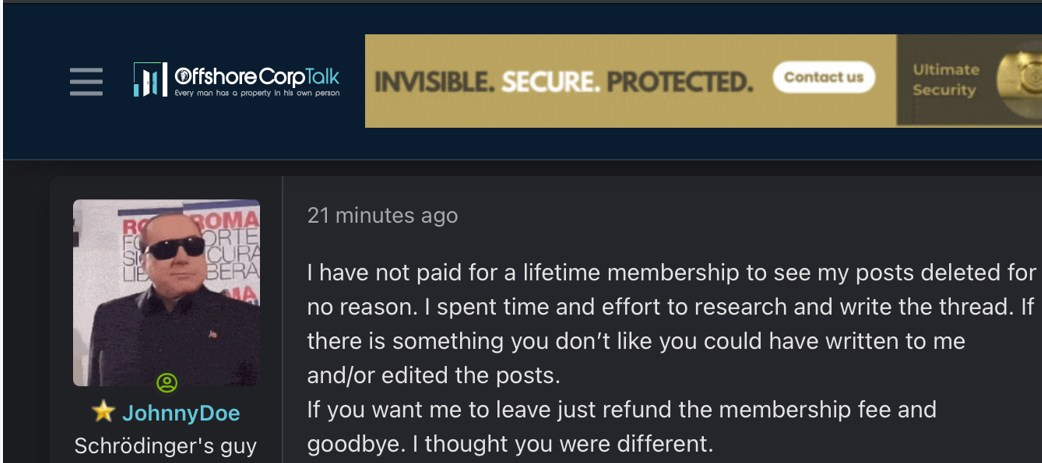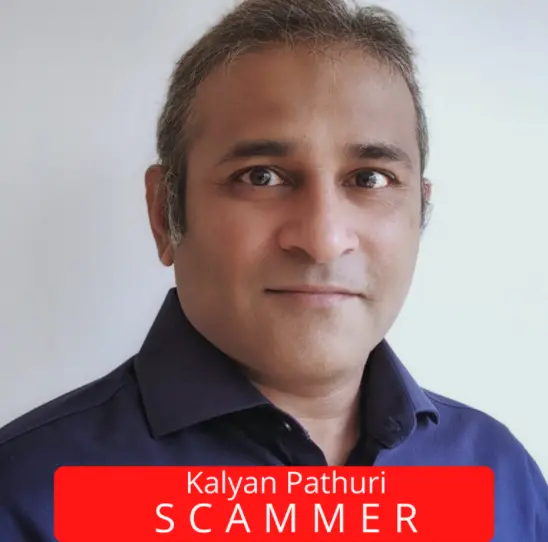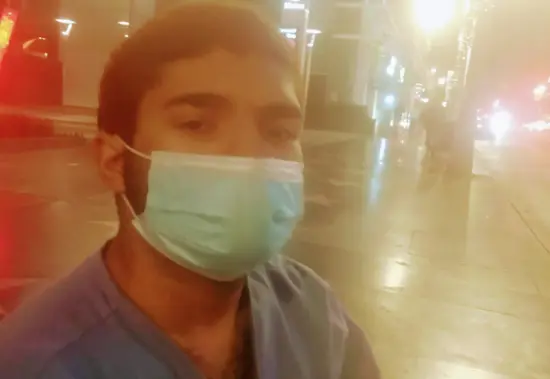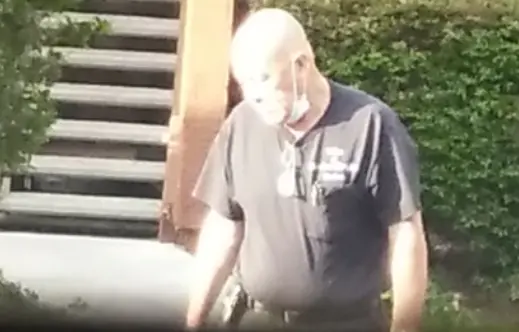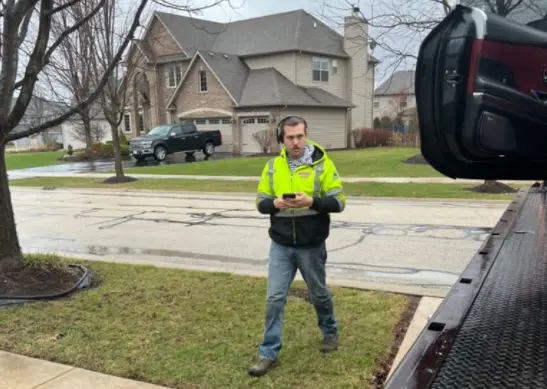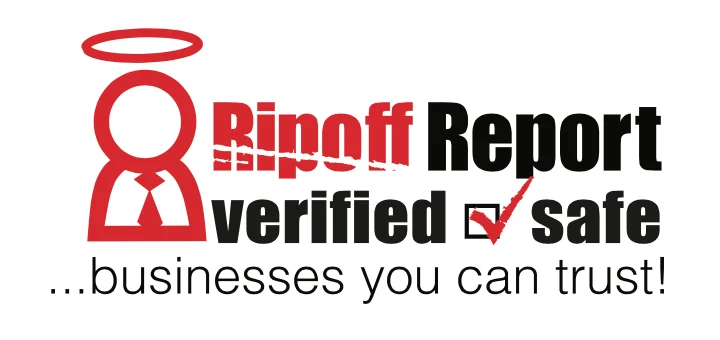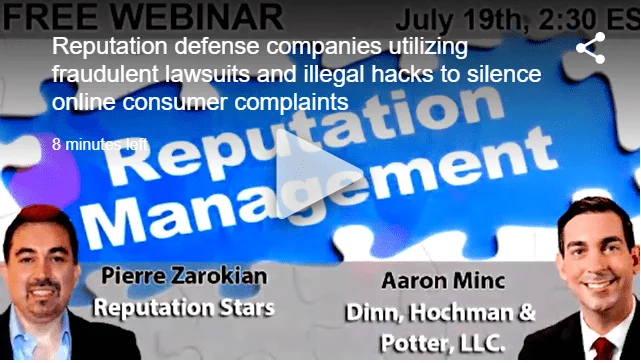Complaint Review: David Robert Conway - Toronto Ontario
- David Robert Conway 801-1000 Finch Ave W Toronto, Ontario Canada
- Phone: 647-350-8801
- Web:
- Category: Lawyers
David Robert Conway Dave Conway Crook and the worst lawyer I have ever met - this guy belongs in jail- numerous discipline history with the Law Society of Upper Canada Toronto Ontario
*Author of original report: This Jerk should not be let loose on the public with a law license
listed on other sites?
Those sites steal
Ripoff Report's
content.
We can get those
removed for you!
Find out more here.
Ripoff Report
willing to make a
commitment to
customer satisfaction
Click here now..
This lawyer belongs in jail. I paid him $3,000.00 for a simple claim action and he failed to draft pleadings. He avoided all of my calls and did not respond to my emails . When I finally reached him, he said that he was upset because he had just returned from court on his own matter and that the Judge had dsimissed his action. I later learned that this dope had settled with the Law Society of Upper Canada varius discipline matters that the LSUC was pursuin him for . Conway apparently then filed for bankruptcy to avoid payimng costs to the LSUC. In 2014, years later, this dope then sues LSUC for damages and it is this action that the Judge dismissed because Conway's pleadings did not have a cause of action . I regret paying this jerk money for leagl services when he can't even draft proper pleadings for himself .
This report was posted on Ripoff Report on 09/17/2015 03:50 PM and is a permanent record located here: https://www.ripoffreport.com/reports/david-robert-conway/toronto-ontario-m3j-2v5/david-robert-conway-dave-conway-crook-and-the-worst-lawyer-i-have-ever-met-this-guy-be-1255601. The posting time indicated is Arizona local time. Arizona does not observe daylight savings so the post time may be Mountain or Pacific depending on the time of year. Ripoff Report has an exclusive license to this report. It may not be copied without the written permission of Ripoff Report. READ: Foreign websites steal our content
If you would like to see more Rip-off Reports on this company/individual, search here:
#1 Author of original report
This Jerk should not be let loose on the public with a law license
AUTHOR: - ()
SUBMITTED: Thursday, September 17, 2015
This lawyer belongs in jail. I paid him $3,000.00 for a simple claim action and he failed to draft pleadings. He avoided all of my calls and did not respond to my emails . When I finally reached him, he said that he was upset because he had just returned from court on his own matter and that the Judge had dismissed his action. I later learned that this dope had settled with the Law Society of Upper Canada variuos discipline matters that the LSUC was pursuing him for . Conway apparently then filed for bankruptcy to avoid paying costs to the LSUC. In 2014, years later, this dope then sues LSUC for damages and it is this action that the Judge dismissed because Conway's pleadings did not have a cause of action . I regret paying this jerk money for legal services when he can't even draft proper pleadings for himself . CITATION: Conway v. LSUC, 2014 ONSC 5273 COURT FILE NO.: CV-13-478038 DATE: 20140911 SUPERIOR COURT OF JUSTICE - ONTARIO RE: DAVID ROBERT CONWAY Plaintiff -AND- LAW SOCIETY OF UPPER CANADA and LORNE LEVINE Defendants BEFORE: F.L. Myers J. COUNSEL: Brendan van Niejenhuis and Naomi Greckol-Herlich, for the Law Society of Upper Canada, Moving Party Robert David Conway, In Person HEARD: September 11, 2014 ENDORSEMENT [1] The Law Society of Upper Canada (“LSUC”) moves to strike the statement of claim on the basis that some of the plaintiff’s allegations were the subject of a settlement agreement and release entered into in 2008; some are collateral attacks on existing court orders or administrative proceedings governed by other administrative processes; some state no reasonable cause of action known to law; and some are scandalous, frivolous and vexatious. [2] The statement of claim is very particularized. It crosses the line into prolixity and breaches the requirement in Rule 25.06(1) that a pleading shall contain a “concise statement of the material facts” alleged. That, however, can be fixed by editing. The LSUC says that even with all of the details pleaded, the plaintiff has no right to sue it because the facts pleaded taken together, without undue technicality, and with allowance for drafting frailties, still do not state a valid basis upon which legal relief could be granted by the court even if all of the allegations pleaded are proven to be true at trial. Accordingly, I have reviewed the claim and listened to the parties on the basis that the facts as pleaded are true and without technical parsing of the drafting in order to consider whether the facts pleaded in the statement of claim are capable of stating a basis for legal relief. [3] In paragraph 214 of the statement of claim, the plaintiff conveniently summarizes the wrongdoing that he alleges against the LSUC as described in the 213 preceding paragraphs. [4] The allegations concerning the complaint by Ms Miklaucic and the allegations concerning the LSUC’s conduct in dealing with the plaintiff’s failure to pay transaction levies from 1999 were the subject of litigation that was settled by a release and court order as pleaded at para. 140 to 144 of the statement of claim. The release is incorporated by reference into the statement of claim and therefore its full terms are available for review. The relief summarized at paras. 214(a) through (o) is an improper attempt to re-litigate those settled and released issues. [5] The allegation summarized at para. 214(p) refers to facts pleaded in paras. 157 to 160 of the statement of claim. Paragraph 214(p) is either an allegation about the LSUC’s trustee services as dealt with in paras. 214(y) and (z) below or else it might be an utterly bald assertion of defamation. If the latter, then, on its face the claim is made years beyond the expiry of the relevant limitation period. [6] Subject to consideration of the tort of misfeasance in public office below, the allegations summarized in paras. 214(q) to (s) and (bb) to (dd) are attempts to litigate concerning the proper outcome of regulatory proceedings under the Law Society Act concerning the scheme under which the LSUC regulates lawyers and paralegals. These allegations are a collateral attack on administrative decisions already made or that ought to have been pursued under the administrative regime. Parties must follow the administrative scheme subject to whatever appeal rights or rights of judicial review as may lie. R. v. Consolidated Maybrun Mines Ltd., 1998 CanLII 820 (SCC). [7] The assertion in para. 214(y) concerns the LSUC efforts to obtain fees for acting as trustee of Mr. Conway’s practice and to subrogate against him for claims paid by the Compensation Fund. The matter resulted in a consent order of the court which cannot be subject to collateral attack or re-litigation. The essence of the plaintiff’s complaint is that he should not have been required to pay more than he agreed to pay in his settlement and release. That was for him to allege in the court proceedings concerning this issue. Instead he consented to judgment and then made a proposal in bankruptcy as pleaded in para. 154 of the statement of claim. Moreover, the release expressly exempts LSUC trustee services from its scope. [8] Mr. Conway summarizes in paras. 214(w) and (x) complaints that the LSUC sought to undermine its settlement with him by, among other things, bringing proceedings against him shortly after the settlement was signed for practising while suspended. The Law Society Hearing Tribunal heard this complaint and with confirmatory evidence from Mr. Conway’s lawyer, held that this was issue not covered by the settlement or release. Mr. Conway was on notice that there was an issue about him practising while suspended when he settled the LSUC’s civil action. Subject to consideration of the tort of misfeasance in public office below, the validity of regulatory steps stand or fall under the regulatory scheme. The matters cannot be re-litigated in court. Moreover the release clearly exempts ongoing regulatory proceedings. [9] The allegations summarized in paras. 214(t), (u) and (v) do not state a cause of action. The plaintiff does not like the settlement that he says he was bullied to enter into by a biased pre-trial judge. These claims do not raise a cognizable cause of action. The inferences drawn and bald allegations made in paragraphs 167 to 170 are scandalous, frivolous and vexatious in any event. [10] The allegations summarized in paras. 214(z), (aa), and (ee) do not state a cause of action. Subject to consideration of the tort of misfeasance in public office, below, there is no right of action against a creditor who votes to reject a debtor’s proposal in bankruptcy or who opposes a bankrupt’s discharge from bankruptcy. [11] As noted above, nearly all of the plaintiff’s allegations could be taken together as an allegation that the LSUC intentionally abused its statutory authority to single out and injure the plaintiff. Mr. Conway submitted that the LSUC is accountable in damages if acts “outside its statutory authority”. He had no law to support that submission. The plaintiff does not expressly mention the tort of misfeasance in public office by name, but it is the only tort that might cover the essential thrust of the plaintiff’s allegations. In Trillium Power Wind Corporation v. Ontario (Natural Resources), 2013 ONCA 683 (CanLII), the Court of Appeal set out the pleading prerequisites of this tort at para. 58 as follows: To pass muster in pleading misfeasance in public office, Trillium must plead material facts capable of establishing: a) deliberate unlawful conduct by a public officer in the exercise of a public function, being conduct that he or she knows to be inconsistent with the obligations of the office; b) awareness that the conduct is unlawful and likely to injure the plaintiff; and c) other requirements common to all torts including that the tortious conduct is the legal cause of the plaintiff’s injuries and that the injuries suffered are compensable in tort law. [12] Try as I might to allow for pleading deficiencies, I cannot see a proper plea of this tort or that one is possible on the facts alleged. Even if the LSUC was wrong in its interpretation of its regulations in refusing to allow the plaintiff to apply for a paralegal licence while he was still suspended from practising as a lawyer, it was corrected by the appeal tribunal. The issue had never been tested before because the regulations were new. There is no pleading that LSUC was deliberately acting in an unlawful manner. In fact, the lower LSUC tribunal agreed with the LSUC staff position. The final interpretation of the law was not known until the appeals tribunal ruled. [13] The plaintiff has also seized on the existence of two different administrative suspension orders from June 8, 2000 to try to re-characterize the events as a misrepresentation or fraud. The recently discovered existence of a suspension under s.47 of the Law Society Act does not diminish the existence of the prior suspension for non-payment of fees under s.46 which was the subject of both an administrative appeal and then court proceedings. Mr. Conway has settled and released that issue. Buyer’s remorse concerning the settlement is not a cause of action. Neither is aggressive negotiation unlawful. Similarly, the alleged undermining of the settlement by the LSUC bringing new regulatory proceedings against the plaintiff coupled with its aggressive stand in his bankruptcy proceedings are not tortious per se. Clearly the LSUC was zealous in its efforts to enforce its regulatory powers against the plaintiff. But there is nothing unlawful in bringing new regulatory proceedings or acting as a creditor in bankruptcy proceedings that can found the tort of misfeasance in public office. Allegations of “singling out” may be no more than a regulator carrying out its duties against an individual. Absent allegations of unlawfulness and, especially, knowing unlawfulness, there is no tort. [14] The Court of Appeal in Trillium, supra, referred to the decision of Stratas J.A. in St. John’s Port Authority v. Adventure Tours Inc., 2011 FCA 198 (CanLII), to the effect that the court must guard against bald pleadings of technical words to try to dress up a claim to fit this tort. In Trillium, the Court of Appeal also had before it a detailed claim and was able to find a very narrow allegation in which the tort could possibly be made out if the facts as pleaded were true. Looking at the facts pleaded here, as detailed as they are, I am unable to find a cause of action pleaded or pleadable in the tort of misfeasance in public office. [15] Given the over-particularity of the statement of claim in telling the plaintiff’s entire story, I see no use in granting leave to amend as there is nothing more to add. Mere efforts to add to the facts descriptive adverbs or adjectives (“unlawfully” or “unlawful”) will not make them so. All of the facts are there already. Even if proven true, it is plain and obvious on the plaintiff’s own pleading, that the facts alleged do not and cannot entitle Mr. Conway to succeed in his lawsuit as a matter of law. Therefore, the action as against LSUC is dismissed. [16] The fixing of costs is a discretionary decision under section 131 of the Courts of Justice Act. That discretion is generally to be exercised in accordance with the factors listed in Rule 57.01 of the Rules of Civil Procedure. These include the principle of indemnity for the successful party (57.01(1)(0.a)), the expectations of the unsuccessful party (57.01(1)(0.b)), the amount claimed and recovered (57.01(1)(a)), and the complexity of the issues (57.01(1)(c )). The Court must consider as well as the application of the principle of proportionality (Rule 1.04(1)). Overall, the court is required to consider what is “fair and reasonable” in fixing costs, and is to do so with a view to balancing compensation of the successful party with the goal of fostering access to justice: Boucher v. Public Accountants Council (Ontario) 2004 CanLII 14579 (ON CA), 2004 CanLII 14579 (ONCA), (2004), 71 O.R. (3d) 291 (Ont C.A.), at paras 26, 37. The LSUC seeks $15,000 in partial indemnity costs on full indemnity costs of $38,000. Mr. Conway submitted that if he lost he should pay $10,000. In my view, given the detailed materials filed, it is reasonable and I therefore order that the plaintiff pay LSUC costs fixed in the amount of $15,000 inclusive of disbursements and HST. ________________________________ Date: September 11, 2014 F.L. Myers J.
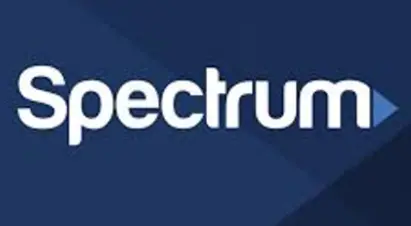
Advertisers above have met our
strict standards for business conduct.














